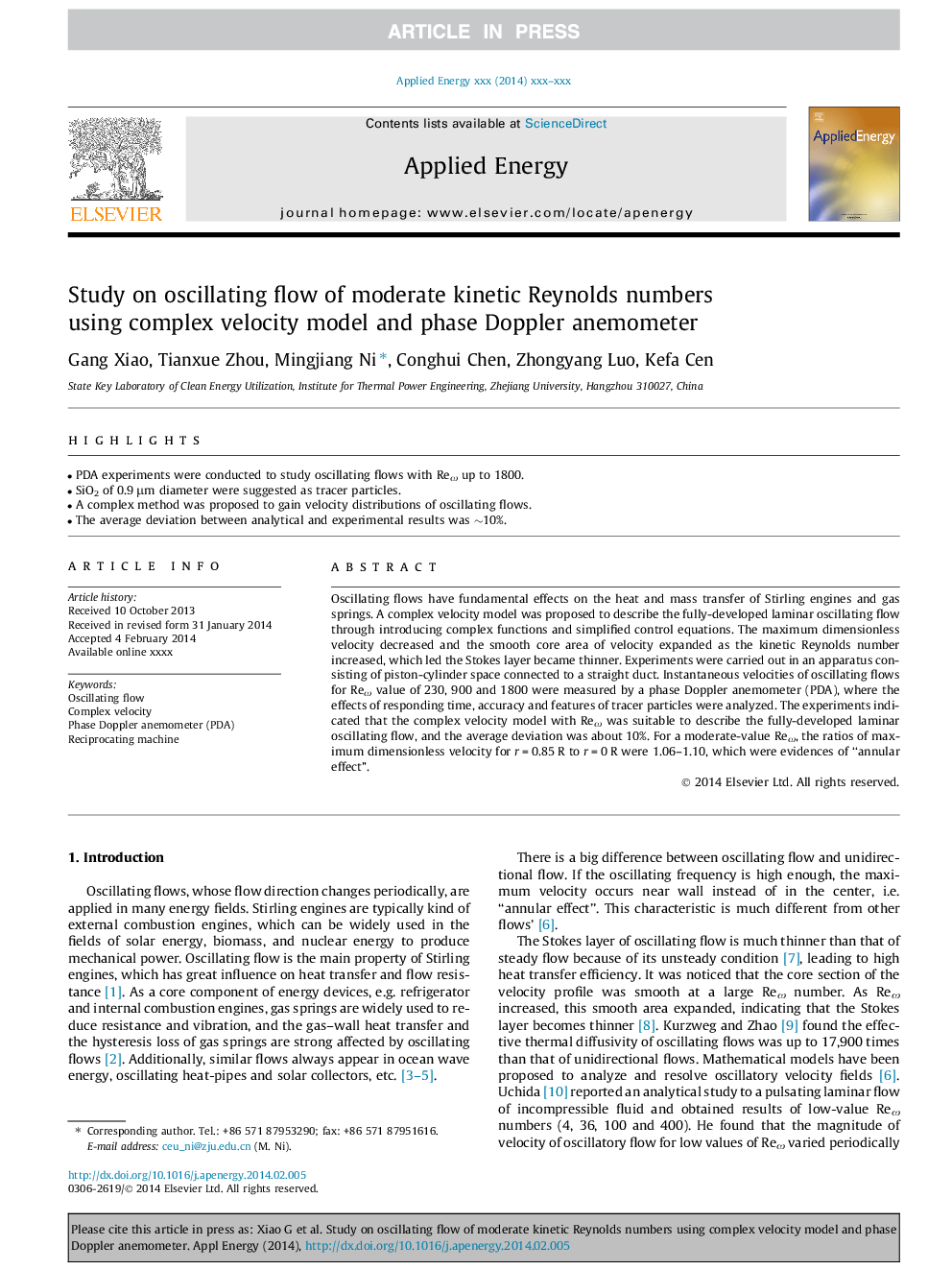| Article ID | Journal | Published Year | Pages | File Type |
|---|---|---|---|---|
| 6690257 | Applied Energy | 2014 | 8 Pages |
Abstract
Oscillating flows have fundamental effects on the heat and mass transfer of Stirling engines and gas springs. A complex velocity model was proposed to describe the fully-developed laminar oscillating flow through introducing complex functions and simplified control equations. The maximum dimensionless velocity decreased and the smooth core area of velocity expanded as the kinetic Reynolds number increased, which led the Stokes layer became thinner. Experiments were carried out in an apparatus consisting of piston-cylinder space connected to a straight duct. Instantaneous velocities of oscillating flows for ReÏ value of 230, 900 and 1800 were measured by a phase Doppler anemometer (PDA), where the effects of responding time, accuracy and features of tracer particles were analyzed. The experiments indicated that the complex velocity model with ReÏ was suitable to describe the fully-developed laminar oscillating flow, and the average deviation was about 10%. For a moderate-value ReÏ, the ratios of maximum dimensionless velocity for r = 0.85 R to r = 0 R were 1.06-1.10, which were evidences of “annular effect”.
Keywords
Related Topics
Physical Sciences and Engineering
Energy
Energy Engineering and Power Technology
Authors
Gang Xiao, Tianxue Zhou, Mingjiang Ni, Conghui Chen, Zhongyang Luo, Kefa Cen,
